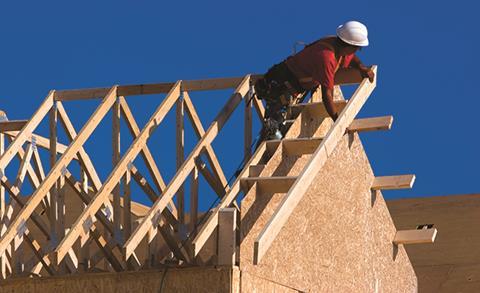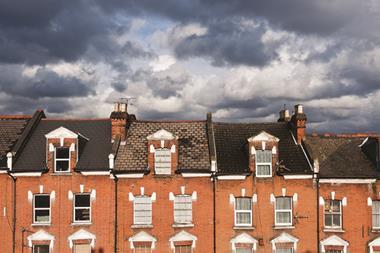It is taken for granted both in the industry and in policymaking circles that the UK desperately needs more housing.

The government is so convinced of the case that it increased its housebuilding target from 200,000 homes a year to 300,000 homes a year in last year’s Autumn Budget. Explaining why house prices had spiralled out of the reach of many, chancellor Philip Hammond gave just one reason: “Put simply, successive governments over decades have failed to build enough homes.”
However, writing in last week’s Property Week, Oxford Economics director Ian Mulheirn challenges this view. Pointing to data showing that relative to household income, average rents have fallen since 2005, he maintains that there is no crisis in the supply of housing. Even in London, he says “there is scant evidence of a worsening shortage of places to live”.
Instead, he argues that blame for high house prices lies “solely with financial conditions”, namely record-low interest rates.
So is the chancellor really barking up the wrong tree by trying to encourage more housebuilding?
Paul Swinney, head of policy and research at Centre for Cities, agrees with Mulheirn that cheaper credit has pushed up house prices, but he isn’t convinced that it is solely to blame for the housing crisis.
“The big differences in house price growth across the country show that more freely available credit is not the only reason for high house prices,” he says. “Since 2009 house prices have risen by 2% in Burnley, compared with 76% in Cambridge.”
He goes on to say that prices have risen fastest in the UK’s most successful cities and that there is a danger people are now being priced out of these cities.
Join the debate
‘Financial factors were responsible for the house price boom, and they’re most likely to be its undoing’ - my piece for @PropertyWeek https://t.co/sKFyUfqXpj
— Ian Mulheirn (@ianmulheirn) May 12, 2018
Meanwhile, Savills research analyst Emily Williams contends that Mulheirn’s focus on rents, which he argues more accurately reflect demand and supply for housing than prices, doesn’t tell the whole story. She says there are other important indicators pointing to an undersupply of houses in areas such as London and the South East, where the housing crisis is most acute.
For example, average household size, which has been falling across the country as a whole, has until recently been rising in these locations. “This suggests there has been suppressed household formation, and as new households can only form if there are available properties for them to occupy, this points to an undersupply of new homes,” says Williams.
This is further reinforced by data showing that the number of people per room in the private rented sector has increased in the least affordable areas, she adds.
Impact on affordability
Savills’ official view is that the government is right to be targeting 300,000 new homes a year, claiming that this would be enough to have “a meaningful impact on affordability”.
The government’s own analysis, published last month, is not quite as clear-cut. It draws on a model developed a decade ago, which estimates that if housing stock were to increase by 1%, house prices would fall, all other things being equal, by around 2%. The 300,000 target equates to an increase in supply of about 1.3%, so it would take some time for housebuilding at this level to make a tangible difference to pricing, especially when counterbalanced with the impact of wage growth.
“Differences across the country show that more freely available credit is not the only reason for high house prices”
Paul Swinney, Centre for Cities
In the government’s analysis of housebuilding between 1991 and 2016, during which time housing stock grew by about 4.1 million, the upward pressure on house prices of rising incomes more than outweighed the deflationary impact of higher supply.
Looking ahead, what could well have the biggest impact on house prices is interest rates. Historical analysis from before the financial crisis found that a one-percentage-point increase in interest rates would result in a 3% fall in prices.
How relevant this formula is today is questionable given that interest rates are so abnormally low at the moment. But at the very least, it would suggest that if rates were to return to more normal levels, prices would tumble. Mulheirn could turn out to be spot on in his conclusion that “financial factors were responsible for the house price boom – and they’re most likely to be its undoing”.





























No comments yet